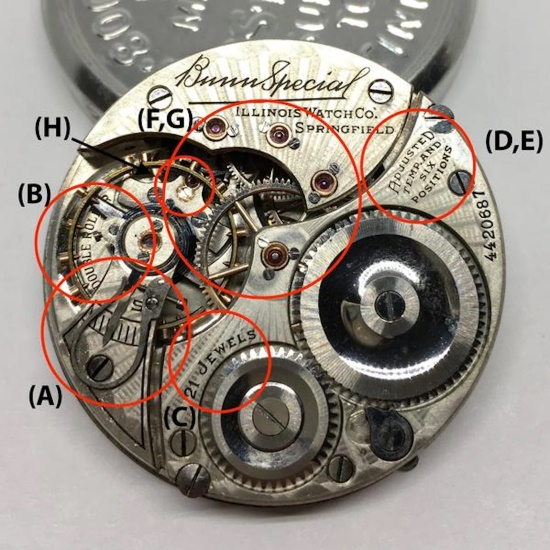
Mechanically , almost all 1900’s railroad watches shared a number of performance and reliability enhancing features.
Most had a fixed regulator to avoid timekeeping variation from impact (A), a double roller balance wheel to avoid going out of action (often called overbanking) (B), 19 or more jewels to reduce friction and increase consistency of the gear train (C), timekeeping adjustment in 5 or more positions to make sure the watch kept accurate time regardless of orientation (D), and adjustment for temperature to ensure accuracy in a variety of climates (E). Many railroad watches had solid gold or gold plated gear trains (F) and jewel settings (G) to reduce the effects of magnetism as well as reduce tarnishing, and later watches had features such as magnetically resistant balance wheels, Elinvar hairsprings, adjustments for isochronism, and advanced cap jewel covers (H).
Some of the highest end railroad watches featured an up-down wind indicator.
This is called a power reserve indicator on modern watches, and it visually communicates how much wind remains in the watch on a sub-dial at 12 O’clock.
This feature did not necessarily improve the timekeeping performance of the watch, but it is convenient to be aware of how much wind is left on the watch to avoid letting the watch run out.
________________________________________________________________________
The Pocket Watch Database is an excellent resource for getting information on antique American pocket watch movements. In addition to manufactured year, it provides a wealth of knowledge on the origin of movements, production numbers, and images.
________________________________________________________________________
Overbanking for those of you in Reo Linda, as Rush Limbaugh use to say,
doesn’t mean overdrawing your bank acount.
When the impulse jewel becomes stuck outside the horns of the pallet fork, the watch is said to be “overbanked.” This condition prevents the watch from running because the impulse jewel can no longer interact with the pallet fork to lock and unlock the escapement.
https://blog.pocketwatchdatabase.com/2022/08/22/overbanking-in-watches-failure-of-the-safety-action/
_________________________________________________________________________
“The guard pin in a lever escapement is purely a safety device. If it should be dispensed with, the time–keeping quality of the watch would not be impaired so long as it was not subjected to sudden motion. During the free excursion of the balance in the interval between two impulses, the combined action of the guard pin and roller edge prevents the fork going out of position to receive the impulse pin. Was it not for this safety provision any sudden motion given the watch would be liable to cause, what is generally called over-banking, more properly speaking, going out of action.”
A watch that overbanks, which means that the roller jewel strikes the outside of the fork, can never be timed accurately as there is no uniformity to its motion, and the least movement of the body when the watch is in the pocket will cause the watch to overbank and the roller jewel will strike the outside of the fork, thereby causing the watch to run fast, more or less, depending on the amount of double impulse that the balance may receive.
An error of the above mentioned kind may be rectified by substituting the mainspring by one of a half of one degree weaker than the original mainspring which caused the overbank.
________________________________________________________________________
Home / Escapement / Overbanking in Watches: Failure of the Safety Action
Overbanking in Watches: Failure of the Safety Action
By Nathan Moore
/
In Escapement , Technical
5436 Views
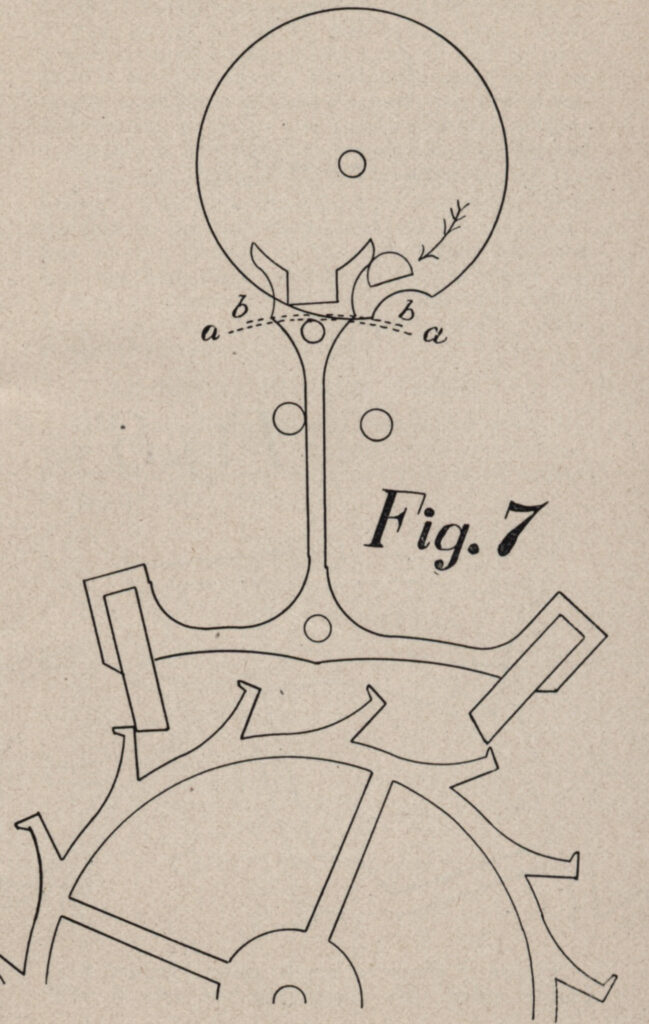
Published in “The Lever Escapement” (Book 10) by C.T. Higginbotham
Describing The Problem
When the impulse jewel becomes stuck outside the horns of the pallet fork, the watch is said to be “overbanked.” This condition prevents the watch from running because the impulse jewel can no longer interact with the pallet fork to lock and unlock the escapement.
This situation is aptly described in the April 1, 1908 issue of The Horological Review:
“When a watch is overbanked the roller jewel is found resting on the outside edge of the fork, due to some error whereby the lever leaves one banking in an irregular manner; hence the roller jewel on its return excursion strikes on the outside of the horn.”The Horological Review, April 1, 1908
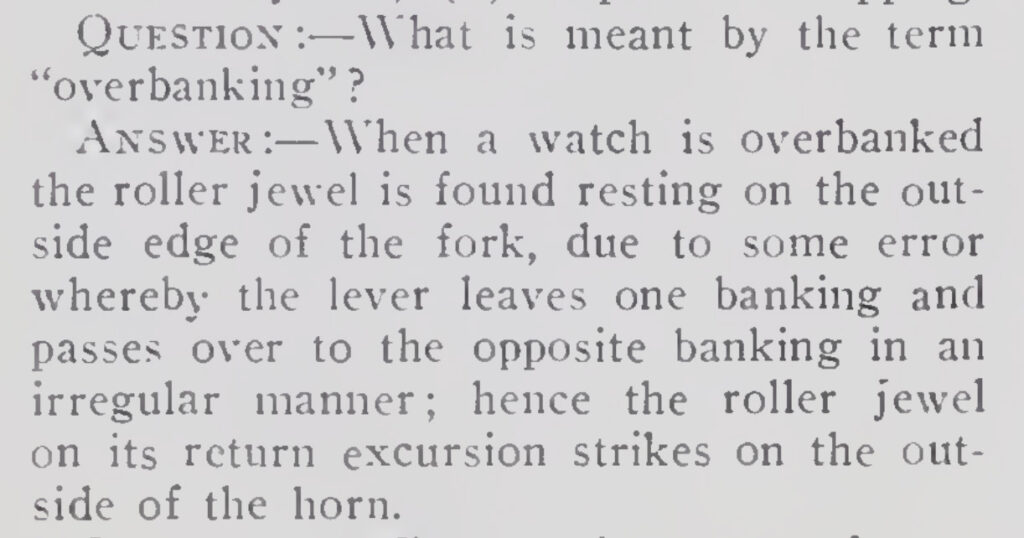
Terminology
There has been confusion related to the terminology of “overbanking.” The most common use of the word refers to the premature unlocking of the pallet fork, resulting in the impulse jewel becoming stuck outside the horns of the fork.
In contrast, some use the term “overbanking” to describe a condition in which the balance amplitude is so excessive, it causes the impulse jewel to knock against the opposite side of the pallet fork before rotating back in the opposite direction. This problem, usually caused by an inappropriately strong mainspring, will cause additional noise in the escapement and prevent the watch from running optimally.
While the majority of the trade called the premature unlocking of the pallet fork “overbanking,” C.T. Higginbotham, the consulting superintendent of the South Bend Watch Company, was quick to correct the terminology in his booklet, “The Lever Escapement,” published around 1905. During an explanation of the safety action, Higginbotham clearly conveyed his preference for the term “out of action”:
“The guard pin in a lever escapement is purely a safety device. If it should be dispensed with, the time–keeping quality of the watch would not be impaired so long as it was not subjected to sudden motion. During the free excursion of the balance in the interval between two impulses, the combined action of the guard pin and roller edge prevents the fork going out of position to receive the impulse pin. Was it not for this safety provision any sudden motion given the watch would be liable to cause, what is generally called over-banking, more properly speaking, going out of action.”Excerpt from “The Lever Escapement” (Book 10) by Charles T. Higginbotham
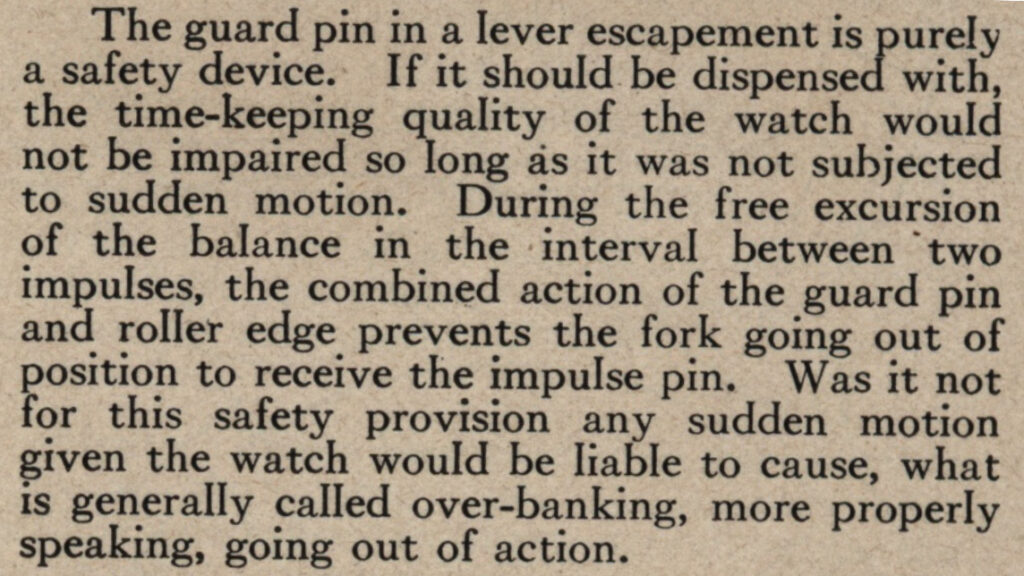
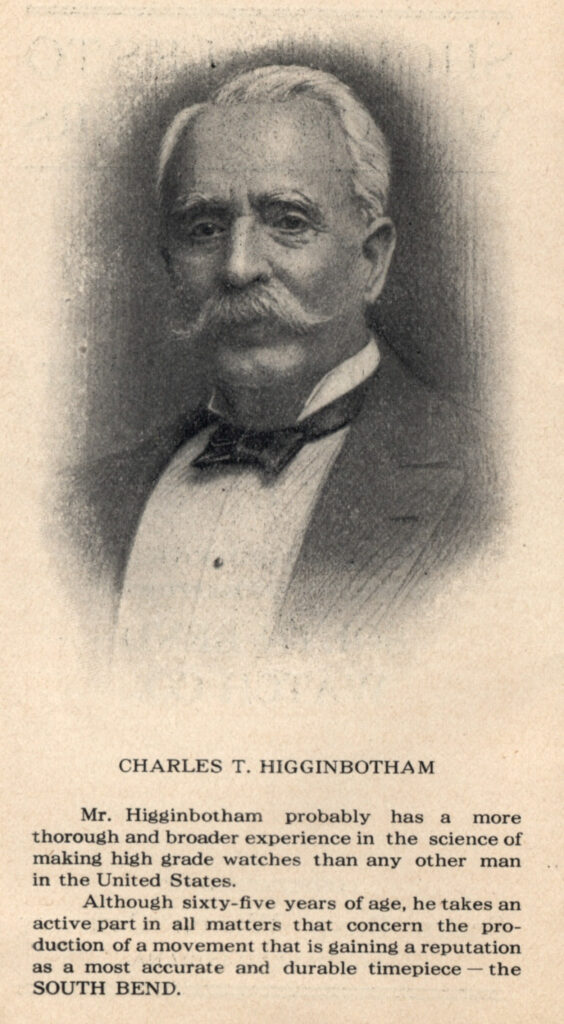
In the July 25, 1906 issue of The Horological Review, Higginbotham directly addressed the term “overbanked” and described it differently than what was widely accepted at the time:
“I have used the term “out of action” instead of overbanked, as is sometimes done, for the reason that the terms are not synonymous. A watch that overbanks is one where the extent of vibration of the balance is so great that the roller pin passes entirely around and strikes the outside edge of the fork, thus causing acceleration of time. When the guard pin passes the edge of the roller so that the fork slot will not be in position to receive the roller pin, it is said to be out of action.”Charles T. Higginbotham, The Horological Review, July 25, 1906
After sifting through original references to determine when and how the “overbanking” term was utilized, I have concluded that “overbanking” and “out of action” were both used to describe the condition in which the impulse jewel becomes stuck outside the fork due to the premature unlocking of the fork.
Perhaps C.T. Higginbotham is more technically correct in his terminology, preferring “out of action” and defining “overbanked” as a different problem, but this definition was not widely accepted. Higginbotham was one of the leading experts on the mechanics of the watch, so we should not completely disregard his words.
There were other experts in the industry that concurred with Higginbotham’s definition. In the July 23, 1919 issue of The Jewelers’ Circular, Charles Resiner, Superintendent of the R.H. Ingersoll & Bro. factory explained overbanking:
“While the poor motion is a detriment to correct timing, it is also well to bear in mind that a motion which is too wide is as disadvantageous as one that is poor and is commonly termed as “overbanked.” The effect of overbanking is sometimes as difficult to overcome as a poor motion.
A watch that overbanks, which means that the roller jewel strikes the outside of the fork, can never be timed accurately as there is no uniformity to its motion, and the least movement of the body when the watch is in the pocket will cause the watch to overbank and the roller jewel will strike the outside of the fork, thereby causing the watch to run fast, more or less, depending on the amount of double impulse that the balance may receive.
An error of the above mentioned kind may be rectified by substituting the mainspring by one of a half of one degree weaker than the original mainspring which caused the overbank.”Charles Resiner, The Jewelers’ Circular, July 23, 1919
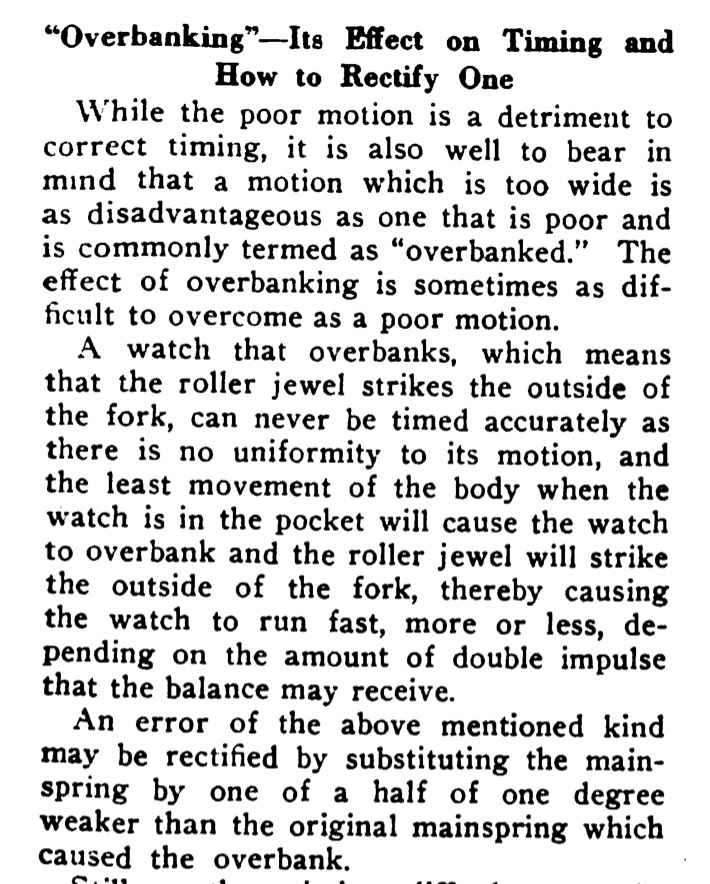
Despite the alternative definition from expert sources, the vast number of references in original trade magazines indicate that the term “overbanked” was the term used most often by watchmakers active in the trade.
Which is correct? Probably the definitions used by Higginbotham and Resiner, but it would be foolish to contend that “overbanked” was not the more popular and understood term.
Identification
This issue can be identified by carefully evaluating the balance motion with a pair of tweezers or pegwood. Utmost caution should be exercised as any force could potentially snap the fragile impulse jewel. When “overbanked,” the balance wheel will be able to be manually rotated in one direction without impedance but will become “stuck” when rotating in the opposite direction as the impulse jewel collidrd with the outside of the pallet fork.
A quick closeup video demonstrating this behavior.
Temporary Solution
The quickest temporary solution is to remove the balance cock and reset the balance wheel, so the impulse jewel is properly positioned within the slot of the pallet fork. However, while this may make the watch momentarily operational, it only serves as a temporary solution since the overbanked condition is merely a symptom of another issue. When a watch experiences overbanking, adjustments are required to remedy the problem and prevent the affliction from occurring again.